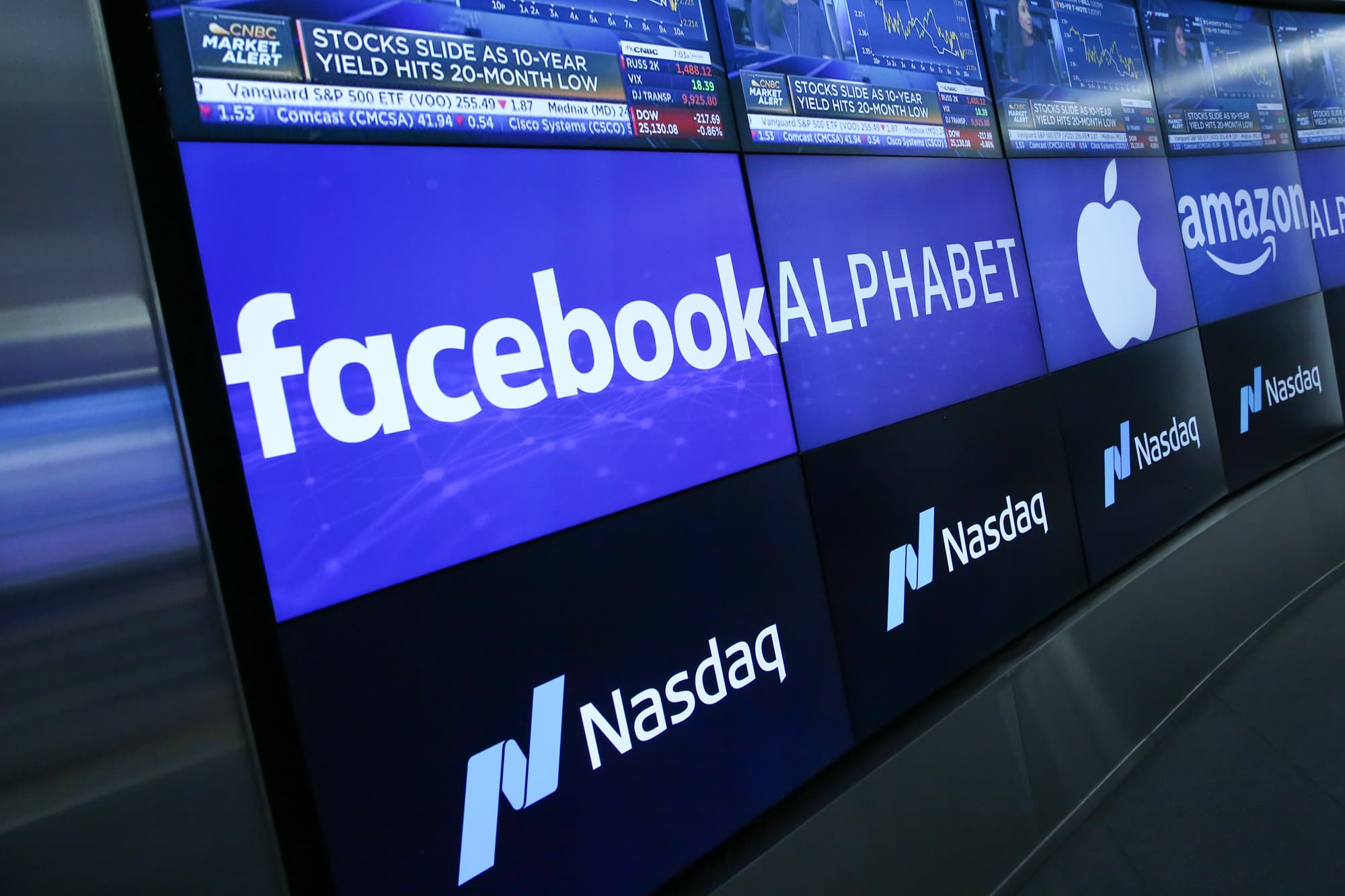FAANG stocks displayed at the Nasdaq.
Adam Jeffery | CNBC
The influence of a few big stocks over the market is at its most extreme level in 20 years, but that’s not necessarily a reason to stay away from those shares, according to Goldman Sachs.
Apple, Microsoft, Amazon, Alphabet and Facebook account for 18% of the S&P 500’s value, a feat not achieved by just five components since the peak of the tech bubble in 2000. Back then it was, Microsoft, Cisco, General Electric, Intel and Exxon Mobil ruling the market before it crashed as the dot-com bubble burst.
But unlike then, the big tech giants of 2020 are more fairly valued and devote more revenue to keeping their growth going, wrote Goldman Chief U.S. Equity Strategist David Kostin in a note.
“Today, the S&P 500 market cap is concentrated in the five largest stocks to a degree not witnessed since the peak of the Tech bubble,” Kostin wrote.
“Lower growth expectations, lower valuations, and a greater re-investment ratio suggest the current concentration may be more sustainable than it proved to be in 2000,” he added.
That appeared to be the case halfway through the fourth-quarter earnings season with profit reports from Facebook, Amazon, Apple and Microsoft ranging from good to great.
Apple posted quarterly sales of $92 billion, a 9% increase over the year-ago period and 4% ahead of consensus. Microsoft clinched positive results across every segment, 14% year-over-year revenue growth and reiterated guidance for double-digit growth in 2020.
Amazon, perhaps the most impressive to date, reported fourth-quarter revenue of $87 billion, growth of 21%. Google parent Alphabet, the last of the bunch to disclose year-end results, will report earnings after the closing bell Monday.
More broadly, with 45% of S&P 500 reporting fourth-quarter results, 69% have announced positive earnings surprises while 65% have reported a positive revenue surprise. And though blended earnings decline thus far is 0.3%, that’s still better than the decline of 1.6% expected by analysts.
The better-than-expected earnings have helped keep traditional valuation measures in check, with the five largest stocks trading at a price-earnings ratio of 30 times, better than the 47 times they topped before the tech bubble burst two decades ago.
“In order to avoid repeating the share price collapse experienced by their predecessors, today’s market cap leaders will need to at least meet — and preferably exceed — current consensus growth expectations,” Kostin wrote. “This time, expectations seem more achievable based on recent results and management guidance.”
